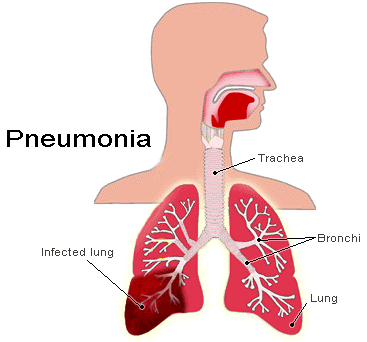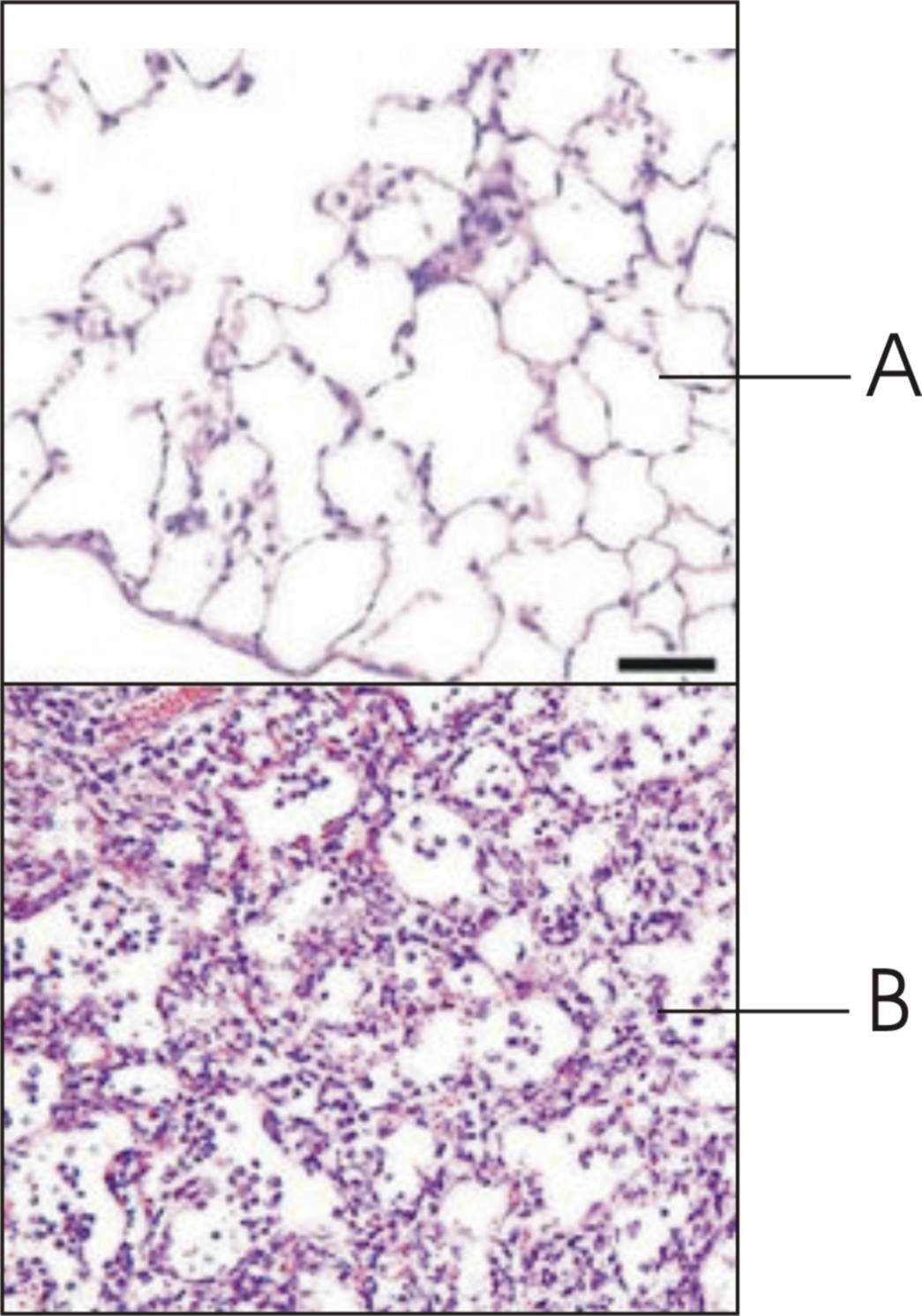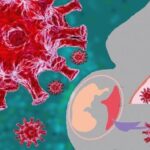Pneumonia is an ordinary infection, if it is not treated at an initial stage, it may spread to others. Also it may cause lot of complications to the infected person which may be sometimes fatal. Hence it is always better to identify the cause of infection and get it treated.
Pneumonia is a general term that refers to an infection of the lungs, which can be caused by a variety of microorganisms, like viruses, bacteria, fungi, and parasites. Pneumonia is a common illness, occurs in all age groups, and is a leading cause of death among the elderly and people who are suffering from long time illness.
It is a very old disease well known to our ancestors. Hippocrates, the ancient Greek physician known as the father of Medicine had described the signs and symptoms of pneumonia accurately as early as 4th century B.C.


It can be classified in several different ways. They are
1. Acute pneumonia: It is a type which usually develops rapidly and lasts for 2 to 3 weeks. It is spread easily and can cause symptoms very soon.
2. Chronic pneumonia: These develop gradually over a period of weeks to months. This type pneumonia does not spread easily.
3. Community acquired pneumonia is a common seen in people with an underlying pathology. Streptococcus is the most common bacterial cause of community-acquired pneumonia. This occurs most commonly in very young and very old people.
4. Hospital-acquired pneumonia is an infection that patients get while they’re in the hospital. This means the infection is not present at the time a patient is admitted to the hospital.
5. Aspiration pneumonia is an inflammation of the lungs and bronchial tubes caused by inhaling foreign material, usually food, drink, vomit, or secretions from the mouth into the lungs.
6. Severe Acute Respiratory Syndrome (SARS): SARS is a highly contagious and deadly type of pneumonia which first occurred in 2002 after initial outbreaks in China. SARS is caused by a virus called as coronavirus.
7. Chemical pneumonia: Chemical pneumonia is caused by chemical toxins such as pesticides, which may enter the body by inhalation or by skin contact.
Causative organisms:
It is caused by different types of microorganisms, including bacteria, viruses, fungi, and parasites.


1. Viruses: Some viruses that cause pneumonia are adenoviruses, rhinovirus, influenza virus (flu), respiratory syncytial virus (RSV), and parainfluenza virus.
2. Bacteria : The bacterium Streptococcus pneumoniae, a common cause of pneumonia. Bacteria typically enter the lung when airborne droplets are inhaled, but they can also reach the lung through the bloodstream when there is an infection in another part of the body. Many bacteria live in parts of the upper respiratory tract, such as the nose, mouth and sinuses, and can easily be inhaled into the alveoli.
3. Fungi: Fungal pneumonia is uncommon, but it may occur in individuals with reduced immune system due to AIDS or other medical problems.
4. Parasites: A variety of parasites can affect the lungs. These parasites typically enter the body through the skin or by being swallowed. Once inside the body, they travel to the lungs, usually through the blood and cause disease.
Spread of the disease:
It is a common illness in all parts of the world. It is a major cause of death among all age groups. In children, the majority of deaths occur in the newborn period, with over two million deaths a year worldwide.
Signs and Symptoms:
Symptoms vary, depending on the age of the child and the cause of the pneumonia. Some common symptoms include:
Fever, chill, cough, unusually rapid breathing, breathing with wheezing sounds, vomiting, chest pain, abdominal pain, decreased activity, loss of appetite and in extreme cases, bluish or gray color of the lips and fingernails.
Diagnosis:
1. Clinical examination:
Individuals with symptoms of it need medical evaluation. By listening into the breath sounds through a stethoscope, the doctor can detect decreased air entry into the affected part of the lung. And also the doctor can detect fever low body temperature, an increased respiratory rate, low blood pressure, a fast heart rate.
2. Other tests
Chest X-ray: An important test for detecting pneumonia. Chest x-rays can reveal areas of opacity (seen as white) which represent consolidation. Chest x-rays are also used to evaluate for complications.
X-ray picture showing




a) Normal Lungs b) Right lung infected with pneumonia.
Note that in this picture the Right Lung has become whitish
Blood test: Blood test is done to identify the presence of bacteria or virus which causes pneumonia. They alter the number and ratio of various types of white blood cells present in the blood.
Sputum test: Sputum of the infected person is taken and stained with dyes and examined under microscope. The organisms causing the disease can often be seen and identified.
Treatment:
Most cases of pneumonia can be treated without hospitalization. Oral antibiotics, rest, fluids, and home care are sufficient for complete healing.
Some of the antibiotics which are given to treat bacterial pneumonia are penicillin, erythromycin, azithromycin, clarithromycin, and the fluoroquinolones.
Viral pneumonia caused by influenza A may be treated with rimantadine or amantadine.
Complications:
Sometimes pneumonia can lead to additional medical problems called complications. Complications are more frequently associated with bacterial pneumonia than with viral pneumonia. The most important complications are:
Respiratory and circulatory failure:
People with pneumonia have difficulty breathing, and it may not be possible for them to breathe well enough to stay alive without support. It can also cause respiratory failure by triggering acute respiratory distress syndrome (ARDS), which results from a combination of infection and inflammatory response.
1. Pleural effusion :Pleural effusion can seen in the X-ray of the infected person. It is the condition which shows the collection of fluid around the lung. Sepsis and septic shock are potential complications of it. Sepsis occurs when microorganisms enter the bloodstream and the immune system responds by secreting cytokines.
2. Lung abscess: If it is not properly treated, it can result in pus inside the lungs called as Abscess.
Prevention of pneumonia:
There are several ways to prevent infectious pneumonia. Vaccination is important for preventing in both children and adults. Vaccinations against Haemophilus influenzae and Streptococcus pneumoniae in the first year of life have greatly reduced their role in pneumonia in children. Other methods to prevent are,
1. Avoid the use of kerchiefs, towels, cloths of an infected person.
2. Avoid the use of plates, cups, spoons which are used by infected person.
3. Use kerchiefs while coughing and sneezing.
4. Wash the hands properly with soaps.
5. Cleanliness and hygiene is most important.
6. Use masks whenever there is a high risk of acquiring the disease.


Dr. C. SHARATH KUMAR
Director and Chief Fertility Surgeon
Mediwave I.V.F & Fertility Research Hospital
City X-ray Complex, Sayyaji Rao Road
Mysuru-570 001
Phone: 0821-2444441 / 4255019











